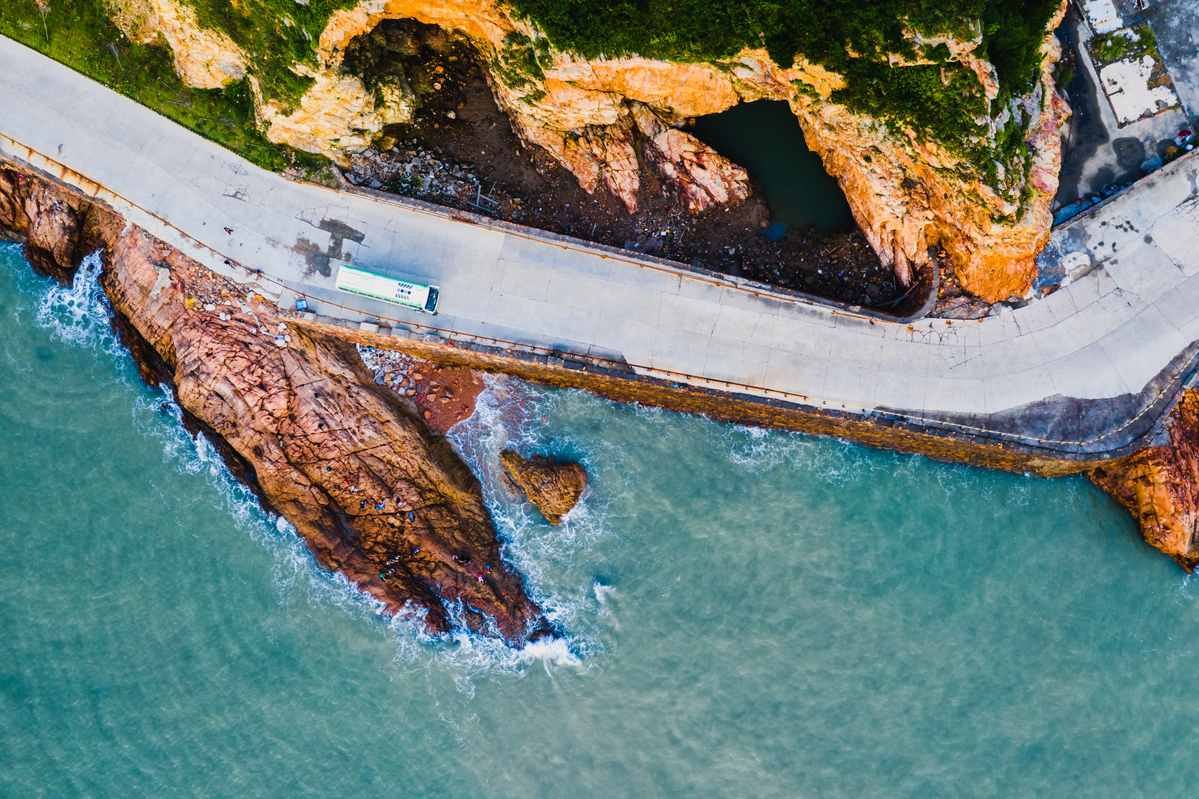Embankment broken to let marine life flourish


HANGZHOU-Chen Shifu was thrilled when an embankment road opened 14 years ago and became the first and only land route connecting the islet he lives on with the East China mainland. Today, the seaweed farmer is even more excited, as part of the dike is being torn down to restore the marine environment.
"At long last, I won't have to relocate my seaweed to help it survive," Chen, 58, said.
Work on breaking the dike began in late December, and when it's finished, the 14.5-kilometer Lingni Embankment linking Dongtou district and the coastal city of Wenzhou, Zhejiang province, will be left with a 247 meter gap, said Zheng Jinmao, a deputy manager of project.
The gap will allow seawater to flow and marine life to migrate, Zheng said. Consisting of some 300 islets, including 14 inhabited ones, Dongtou is home to more than 100,000 people.
For many years, residents had to rely on boats to reach the outside world. Chen said it used to take him eight hours to make the round-trip journey between his home and downtown Wenzhou.
In 2003, construction began on the Lingni Embankment linking one of the major islets of Dongtou and the mainland.
After it was opened to traffic in April 2006, farmers like Chen were able to transport their aquatic products more quickly and efficiently. The road also helped bring visitors to the district and boost tourism, which is a key industry.
According to the district government, local GDP expanded threefold to 6.15 billion yuan ($950 million) within 10 years of the embankment opening, with annual growth reaching 13.8 percent on average.
However, Chen soon discovered that his seaweed seedlings often rotted and died in September, because the dike had divided the aquaculture area into two sections and blocked the flow of seawater.
"During the annual flood season, freshwater from the estuary would reduce the salinity on the northern side of the dike, leading to the death of seedlings," Chen said.
To save the seedlings, he had to move them to the southern side of the dike before later transferring them back to the northern side to grow. The procedure added more than 10,000 yuan to his annual costs.
The dike also blocked the route of many migratory marine animals, such as bass and eels, forcing them to take a detour of more than 50 km.
In 2018, the Dongtou section of National Highway 330 opened to traffic giving residents a second land route to reach the mainland, and swaying the district government's decision to break the dike and boost the marine environment.
Li Changda, an official in charge of the marine environment restoration of Dongtou district, said breaking the dike was just the first step.
"A bridge will be built to connect the rest of the embankment, which is expected to resume its function as a transportation route," Li said, adding that an ocean trench with a width of more than 200 meters will also be dug to facilitate the migration of marine animals.
Xinhua
- Two firms fined 23 million yuan for deadly Jiangxi fire
- Beijing introduces new policies to enhance parks
- Marriage registrations surge in Shanghai following nationwide policy change
- China launches new AI model for agriculture
- China introduces national standard for valuing terrestrial ecosystems
- Government agencies announce regulations of online hiring information





































